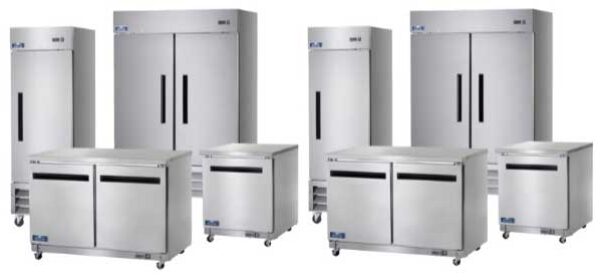
HVAC in commercial and residential buildings
HVAC systems are used in both commercial and residential buildings to provide heating, ventilation, and air conditioning. In commercial buildings, HVAC systems are typically more complex and often involve multiple components such as air handlers, air conditioners, furnaces, boilers, and other components to provide better air quality, control humidity, and manage energy costs. In residential buildings, HVAC systems are often simpler and may consist of just one main unit, such as a furnace or air conditioner.
Strategies For Enhancing a Comfortable, safe, and energy-efficient environment
1. Install programmable thermostats: Programmable thermostats are a great way to ensure that the HVAC system is running at peak efficiency and saving energy. They allow you to easily program different settings for different times of the day, ensuring that the HVAC system only runs when and where it’s needed.
2. Upgrade insulation: Insulate HVAC equipment: Proper insulation will reduce the amount of energy needed to heat and cool the building. Adding additional insulation to your walls and ceilings can help reduce energy loss and increase energy efficiency. This is especially important in older buildings, where insulation may be inadequate or have deteriorated over time.
3. Perform regular maintenance: Regularly scheduled HVAC maintenance can help ensure that your system is running efficiently and help you spot potential problems before they become costly repairs. Install an energy-efficient HVAC system: Installing an energy-efficient HVAC system can drastically reduce the amount of energy needed to heat and cool your building. Look for ENERGY STAR-certified systems that include high-efficiency furnaces, air conditioners, and boilers. An HVAC technician can also give you tips on how to get the most out of your system.
4. Install energy-efficient windows: Replacing old windows with energy-efficient ones can reduce energy loss and help keep your building comfortable year-round. Install energy-efficient
lighting: Installing energy-efficient lighting can help reduce your overall energy consumption and reduce your reliance on the HVAC system. Energy-efficient windows are also a great way to
reduce noise from outside.
5. Utilize natural ventilation: Taking advantage of natural ventilation can help reduce your reliance on the HVAC system and save energy. Optimize heating and cooling loads: By designing the building's envelope to take advantage of natural heating and cooling and by utilizing daylighting and shading strategies, you can reduce the amount of energy needed to heat and cool the building.
Related offerings and information
What we can do to help your controls needs.
- Improve occupancy comfort.
- 24/7 alerts and notification of equipment faults and energy consumption anomalies.
- Enhanced maintenance efficiency.
- Monitor and manage energy consumption.
- Adjust set points and control plants from any web-enabled device.
- Controls system Maintenance and security updates
- Bringing your old system into the modern age with new graphics and accessibility from any Computer, phone, or tablet
- Online systems that can be accessed worldwide but are 100% under your control.
- Offline system with air-gapped networks to prevent any attempts at access.
- Long-term trending, where trend data can be saved permanently and exported to suit Customers’ needs.
- Replacing entire Control systems
- Replacing the front end of an existing controls system
- Making repairs to existing controls systems
- Custom Programing to fit customer needs.
- Custom Front end with customer’s exact floor plan
- Coordinating multiple buildings into one control system/ front end
- Combining Different vendors of controls system into one coordinate system
More Links:
Preparing your walk-in freezer for inspection
How to Clean a Commercial Walk-in Cooler
